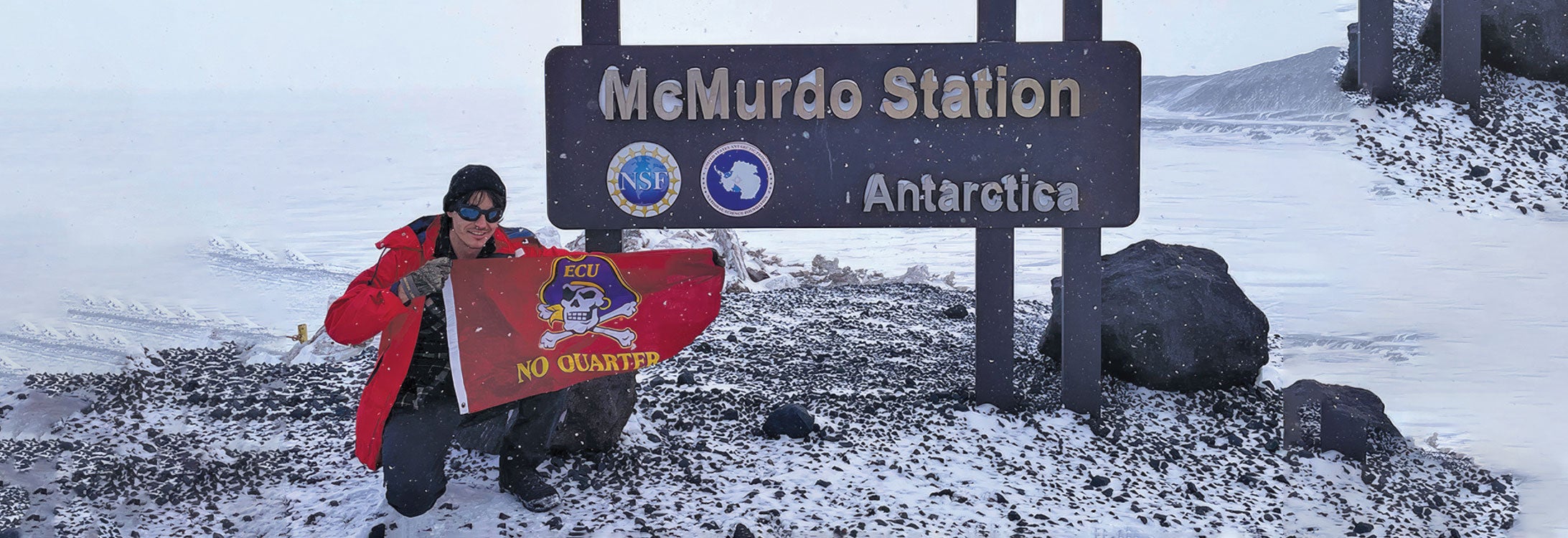Researchers record glacial melt in Antarctica
ECU researchers are studying glacial melt in Antarctica to better understand the effects of climate change in the polar region.
Tristan Bench, an ECU postdoctoral researcher, spent 40 days at the U.S. National Science Foundation’s McMurdo Station in Antarctica from November to January. Along with Regina DeWitt, a professor in the Department of Physics, Bench aims to record glacial melt fluctuations and assess their impact on Antarctic landscapes.
The researchers focus on how past regional climate fluctuations have affected glaciers, providing crucial data for understanding current and future climate change impacts. “These improved assessments are useful for predicting, for instance, flood risks of communities that live near glaciers, or for understanding how climate fluctuations could impact the accessibility of freshwater sources supplied by glacial melt,” Bench said.
Bench’s research interest began during his undergraduate studies in geology, where he volunteered in labs dating rocks and minerals. After working as a field technician, he pursued graduate studies in luminescence dating, a method for determining the age of glacial rock deposits. His expertise in luminescence dating made him a strong candidate for the Antarctic project.
Before heading to Antarctica, Bench underwent extensive training on field safety, including how to handle extreme weather and prevent hypothermia and frostbite. He also learned to operate a ham-style radio for communication in remote areas.
Bench’s research took place in the Dry Valleys, about an hour’s helicopter ride from McMurdo Station. The Dry Valleys are unique in Antarctica because they lack continuous snow cover, with surfaces consisting of sediment and rock from past glacial and hydrological activity.
“The Dry Valleys is considerably warm for Antarctic standards, with December and January often hosting many days above freezing, which allows for glaciers to melt and streams to flow during this period,” he said. Bench said the typical day was between 20 and 30 degrees Fahrenheit and sunny but usually with a persistent, icy wind of about 20 miles an hour.
“It was the kind of weather where you did not want any skin exposed to the elements,” he said.
Bench sampled alluvial fans, which are sediment deposits created by glacial meltwater streams. These deposits provide insight into how glaciers responded to past climate change. The study of these fans, combined with past climatic data, helps researchers understand the long-term environmental effects of glacial melt and its impact on the landscape.
The research uses optically stimulated luminescence to date sediment deposits. This method measures the radiation absorbed by quartz grains in the sediment, allowing researchers to calculate the age of the deposits. Samples must be shielded from light to preserve the radiation record.
Now back from Antarctica, Bench is analyzing the data and looking at future environmental research projects using luminescence dating to study Earth surface processes.
